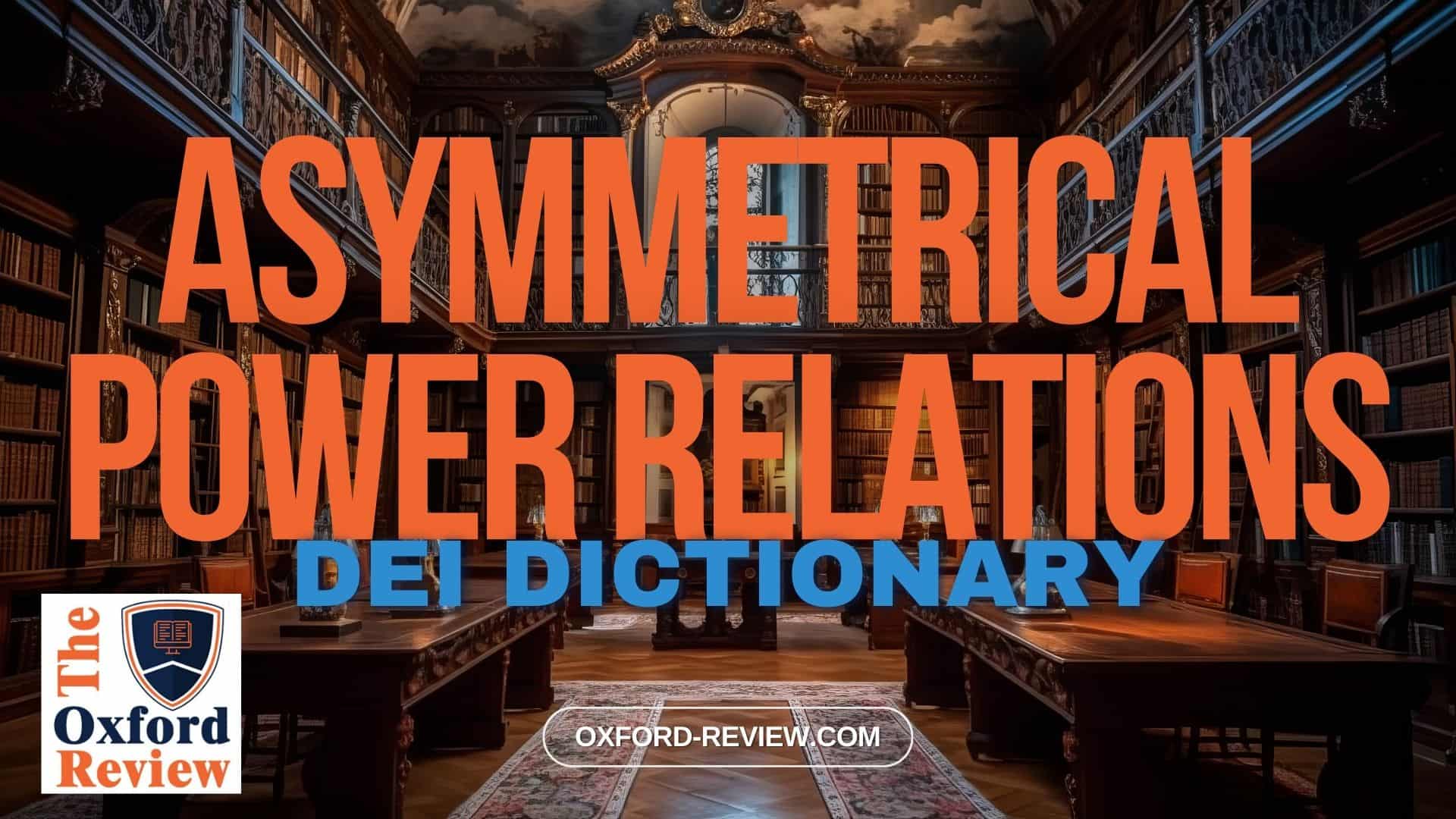Asymmetrical Power Relations – Definition and Explanation

Understanding Asymmetrical Power Relations in DEI: Explained with Examples
In the realm of Diversity, Equity, and Inclusion (DEI), understanding Asymmetrical Power Relations is crucial for grasping societal dynamics. This term refers to imbalanced power structures where one group holds more power, influence, or resources compared to another.
Definition:
Asymmetrical power relations encompass situations where power is unevenly distributed among different groups within a society or organisation. This inequality often stems from factors such as race, gender, socioeconomic status, ethnicity, sexual orientation, or ability. In such scenarios, one group typically enjoys privileges and advantages while another faces marginalisation, discrimination, or oppression.
Significance in DEI:
In the context of DEI initiatives, recognising and addressing asymmetrical power relations is paramount for fostering a more inclusive and equitable environment. Failure to acknowledge these power imbalances can perpetuate systemic inequalities and hinder progress towards diversity and inclusion goals. By understanding and dismantling asymmetrical power relations, organisations can create fairer opportunities and promote a culture of belonging for all individuals.
Examples:
- Gender Pay Gap: One prevalent example of asymmetrical power relations is the gender pay gap. Women, on average, earn less than men for performing the same work. This disparity reflects broader societal inequalities where women are systematically undervalued and underpaid compared to their male counterparts, highlighting an asymmetry in power dynamics within the workforce.
- Racial Profiling: Another illustration of asymmetrical power relations is racial profiling by law enforcement agencies. Certain racial or ethnic groups are disproportionately targeted for surveillance, stops, and searches based on stereotypes and biases. This unequal treatment reflects a power imbalance where marginalised communities experience heightened scrutiny and injustice compared to dominant groups.
Conclusion:
In the pursuit of Diversity, Equity, and Inclusion, understanding and addressing asymmetrical power relations is essential. By acknowledging the unequal distribution of power and privilege, organisations can take proactive steps to dismantle systemic barriers and create more equitable environments for all individuals. Through concerted efforts to promote fairness and justice, we can strive towards a society where everyone is valued and empowered irrespective of their background or identity.
References:
Collins, C. S., & Rhoads, R. A. (2010). The World Bank, support for universities, and asymmetrical power relations in international development. Higher education, 59, 181-205. https://link.springer.com/article/10.1007/s10734-009-9242-9
Church, A., Gilchrist, P., & Ravenscroft, N. (2007). Negotiating recreational access under asymmetrical power relations: The case of inland waterways in England. Society & Natural Resources, 20(3), 213-227. https://www.tandfonline.com/doi/abs/10.1080/08941920601117298
Tokatli, N. (2007). Asymmetrical power relations and upgrading among suppliers of global clothing brands: Hugo Boss in Turkey. https://academic.oup.com/joeg/article-abstract/7/1/67/898393?login=false
Be impressively well informed

Get the very latest research intelligence briefings, video research briefings, infographics and more sent direct to you as they are published
Be the most impressively well-informed and up-to-date person around...
